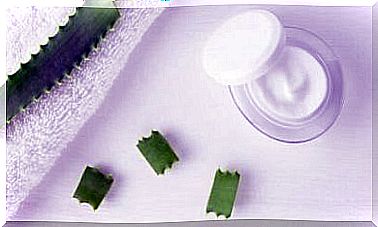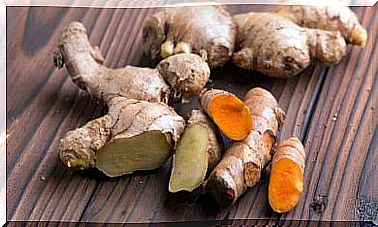8 Types Of Daisies And How To Care For Them
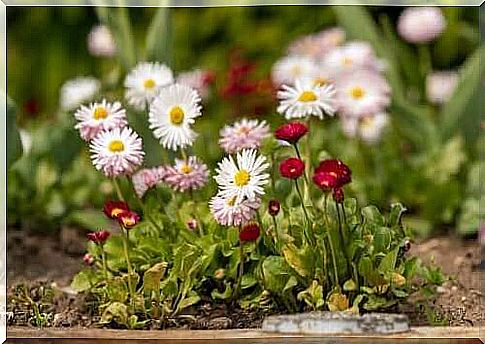
If you are thinking about planting daisies on your balcony or in your garden, don’t miss this article. We will tell you what the different types of daisies are and how to care for each of them so that your flowers have a long and healthy life.
Types of daisies and their care
The daisy is one of the most popular and famous flowers in the world. In many series and movies, we’ve seen characters pluck flower petals, repeating the classic ” he loves me, he loves me not .” So we’re all pretty familiar with this flower…but did you know there are different varieties?
In fact, there are over 140 different types of daisies. The most famous daisy has a yellow center surrounded by many elongated white petals. However, you can also find daisies in a variety of other colors, including yellow, pink, and orange, among others.
1. Large Flowered Daisies
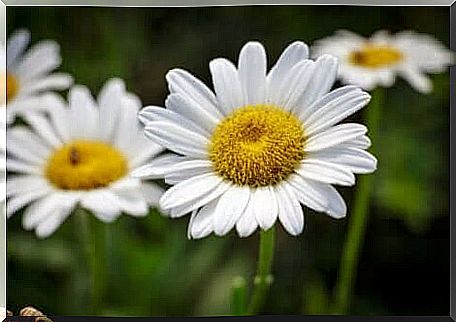
These flowers are usually large in size and have delicate petals. They are native to the Pyrenees, which makes them very resistant to cold climates and frost. However, they must be in full sun to flower. The blooms occur between June and September.
Care
- They like fertile soil with good drainage.
- Keep the soil moist but not soggy to allow the flower to develop properly. The roots of large-flowered daisies cannot withstand standing water.
- It is best to trim flowers occasionally to encourage greater blooms.
- In September, when the flowering phase is over, it is a good idea to cut the foliage back considerably.
2. Echinacea purpurea
Although they resemble the large-flowered daisy, these daisies stand out for their intense reddish center and purple petals. This flower is widely found in North America and some parts of South America and Africa where it grows to 1 meter or sometimes even 2 meters in height!
At the same time, it is worth noting that the red coneflower is famous not only for its attractive appearance, but also for its medicinal uses. Many even use it as an aid to strengthen defenses and treat respiratory infections.
Care
- This daisy requires well-draining soil, as excess water will cause damage to this plant.
- It is also important to remove snails and the like from the environment, because of the serious damage they can cause to the plant.
3. Gerbera
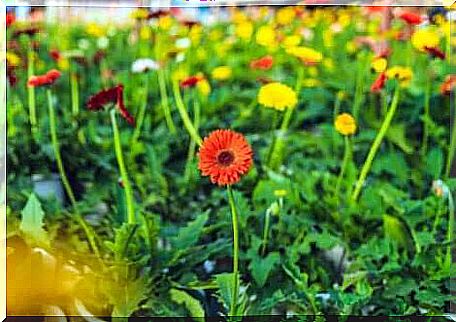
Among the many types of daisies out there, we must not forget to mention the variety commonly known as the gerbera. Did you know that this is actually a daisy variety? If you look closely you will notice the resemblance.
Gerberas are widely used in bridal bouquets and for all kinds of flower arrangements. When you look at them, it’s easy to see why: they’re just beautiful. However, they are fragile flowers that require dedication and work to grow them.
Care
- It is important to apply enough mulch during planting.
- You should also transplant the plant to a larger pot at least once every two years in the spring, so that it develops further.
- Like the types of daisies we mentioned above, the gerbera cannot tolerate excess water. However, they do require moist and well-draining soil.
4. Bush Daisy
The shrub daisy (Argyranthemum frutescens) is also known as Paris daisy. It is native to the Canary Islands, where it grows wild. They are, of course, also widely cultivated for their great beauty.
The flowers stand out for their beautiful colors, including white, yellow and pink, and for their lines of single or double petals. In any case, each species of shrub daisy requires specific care to prevent wilting.
In addition to its decorative use, it is possible to find remedies containing parts of this plant in herbal stores. It is used in products such as stomach tonics and even as a possible remedy for asthma.
Care
- This plant needs full sun to grow and bloom.
- If you use pots, it is better to choose large sizes (more than 40 cm).
- Although the shrub daisy can withstand cold (and even frost) well, the plant develops better at temperatures above 20 °C.
- Watering should be moderate, without puddles forming, and the soil should be well drained.
5. Coneflower

Among the different types of daisies is also the coneflower, also known as ‘black-eyed Susan’, one of the most notable and certainly one of the most difficult to classify as a daisy to the naked eye.
It is distinguished from the classic daisy by its burgundy center with a small yellow or orange touch at the tips and its broad petals that are narrow at the tips. This plant flowers between June and October.
Care
- The coneflower tolerates partial shade, but regular sun exposure is best.
- Like those already mentioned, these flowers need a soil with good drainage. In this case, abundant watering in summer is recommended, but avoid standing water at the roots.
6. Dahlberg Daisies
Dahlberg daisies (Thymophylla Tenuiloba) is the yellow daisy we know so well, a beautiful flower that is easy to care for. In fact, it is one of the best strains to start with when it comes to beginners in gardening and growing daisies.
Care
- The best place for this plant is in full sun.
- Watering should be sufficient to keep the soil moist, but without excess.
- If necessary, it is possible to use natural fertilizers, always in small quantities.
7. Chrysanthemum

This is a plant that requires more care than many of the above-mentioned types of daisies, as it grows in a somewhat uncontrolled manner. Therefore, this plant should be pruned regularly.
Care
- It is advisable to plant the chrysanthemum in full sun.
- Water should be given generously, without being excessive.
- The chrysanthemum needs periodic fertilization (but not in the summer) to develop healthily.
- To prevent the plant from wilting, prune regularly.
8. Bellis perennis
This variety of daisies is delicate and the care is a bit different from that of its sisters. It is the variety that we usually find in pastures, in a natural and wild way.
Care
- These flowers prefer partial shade.
- Watering should be abundant, especially in the hot months. Sufficient watering should be done periodically in autumn and winter.
- It is important to protect the plant from the wind, otherwise the Bellis perennis can be seriously damaged.
These are just some of the types of daisies that you can find in the market and stores to decorate your home. So why not plant daisies and enjoy these beautiful flowers? Remember to keep in mind our tips to get a long and profuse bloom!
